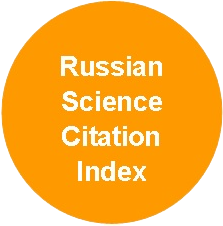Adaptation to Soil Conditions of in vitro Regenerated Birch Lines Selected for Salinity Resistance
DOI:
https://doi.org/10.37482/0536-1036-2025-3-78-92Keywords:
birch, tolerant lines, micropropagation, substrate, adaptation, growth, root formation, in vitro, ex vitroAbstract
Tissue and cellular plant in vitro breeding is a promising trend that complements and accelerates traditional breeding. Stress modelling under strictly controlled conditions on selective media allows for selection based on resistance to negative environmental factors (including drought and salinity), and preserving and cloning in vitro of selected variants with the desired traits. For forest woody plants, issues related to the adaptation of tolerant genotypes to ex vitro conditions have not been sufficiently studied. This research examines the adaptation features to non-sterile soil conditions of 3 birch lines: downy birch, Karelian birch and Ornäs birch selected through in vitro culture for resistance to salinity (NaCl and Cd(NO3)2). The survival rate, growth and development of plants have been evaluated depending on age, substrate composition and adaptation patterns. It has been revealed that for birch regenerants to successfully survive in soil conditions, their preparation for this stage should begin at the stage of micropropagation. The expediency of using ½ MS nutrient medium without hormones to obtain regenerants with active spontaneous rhizogenesis, normal growth and development, without signs of somaclonal variability, balanced in size shoots and root system has been shown. The highest ex vitro survival rate (on average 97–99 %) has been obtained with a 2-stage plant adaptation scheme for plants: 14 days in laboratory conditions, then 14 days in a greenhouse (compared to 1-stage adaptation – 28 days in the laboratory), followed by planting in May in protected soil of a greenhouse. The preferred planting of 1-month-old regenerants 4.5–6 cm high in containers with a substrate of peat soil combined with perlite in a ratio of 3:1 has been shown. All 3 lines have shown active lateral root branching, with an average of 6–7 roots 1st-order roots and 18–29 2nd-order roots. Apparently, a lower short-term nighttime temperature in the greenhouse in spring compared to the daytime one stimulates the formation of a developed branched root system. This ensures a better supply of water and nutrients to plants, contributing to the full realization of their adaptive potential. After 1 to 2 years of further growing in a greenhouse, salinity-resistant seedlings have corresponded to the sizes of standard planting material, which can be used for protective afforestation and the creation of test crops.
Downloads
References
Бовичева Н.А., Шабунин Д.А., Жигунов А.В., Подольская В.А. Выращивание саженцев триплоидной осины из регенерантов, полученных по технологии in vitro // Тр. СПбНИИЛХ. 2006. Вып. 3 (16). С. 68–76. Bovicheva N.A., Shabunin D.A., Zhigunov A.V., Podolskaya V.A. Growing of triploid aspen seedlings from regenerants obtained through in vitro technology. Trudy Sankt-Peterburgskogo nauchno-issledovatel’skogo instituta lesnogo khozyajstva = Proceedings of the Saint Petersburg Forestry Research Institute, 2006, iss. 3 (16), pp. 68–76. (In Russ.).
Ветчинникова Л.В., Титов А.Ф. Влияние кадмия на геммо- и ризогенез карельской березы // Физиология растений. 2022. Т. 69, No 4. С. 408–416. Vetchinnikova L.V., Titov A.F. Effect of Cadmium on Gemmation and Rhizogenesis in Karelian Birch. Fiziologiya rastenij = Russian Journal of Plant Physiology, 2022, vol. 69, art. no. 72. https://doi.org/10.1134/S1021443722040197
Гигалошвили Т.С., Родькин О.И., Реуцкий В.Г. Условия микроклонирования формируют специфический культуральный фенотип // Биология клеток растений in vitro, биотехнология и сохранение генофонда. М.: ИФР РАН, 1997. С. 413. Gigaloshvili T.S., Rod’kin O.I., Reutskij V.G. Microcloning Conditions Form a Specific Cultural Phenotype. In vitro Plant Cell Biology, Biotechnology and Gene Pool Conservation. Moscow, K.A. Timiryazev Institute of Plant Physiology RAS Publ., 1997, p. 413. (In Russ.).
Деменко В.И., Лебедев В.Г. Адаптация растений, полученных in vitro, к нестерильным условиям // Изв. ТСХА. 2011. Вып. 1. С. 60–70. Demenko V.I., Lebedev V.G. Adaptation of in vitro Plants to Non-Sterile Conditions. Izvestiya Timiryazevskoj sel’skokhozyajstvennoj akademii = Izvestiya of Timiryazev Agricultural Academy, 2011, iss. 1, pp. 60–70. (In Russ.).
Жигунов А.В. Применение биотехнологий в лесном хозяйстве России // Изв. вузов. Лесн. журн. 2013. No 2. С. 27–35. Zhigunov A.V. Use of Biotechnology in the Russian Forest Sector. Lesnoy Zhurnal = Russian Forestry Journal, 2013, no. 2, pp. 27–35. (In Russ.).
Кодун-Иванова М.А. Показатели водного стресса микроклонально размноженных растений осины Populus tremula при их выращивании в условиях ex vitro // Тр. БГТУ. 2017. Сер. 1, No 2. С. 146–155. Kodun-Ivanova M.A. Indicators of Water-Stress of Microclonal Aspen Populus tremula to the ex vitro Conditions. Trudy BGTU = Proceedings of BSTU, 2017, ser. 1, no. 2, pp. 146–155. (In Russ.).
Коллекция in vitro клонов ценных генотипов лиственных древесных растений. Научно-технологическая инфраструктура Российской Федерации. Режим доступа: https://ckp-rf.ru/catalog/usu/569228/ (дата обращения: 03.03.24). Collection of in vitro Clones of Valuable Genotypes of Deciduous Woody Plants. Scientific and Technological Infrastructure of the Russian Federation. (In Russ.).
Красинская Т.А., Кухарчик Н.В., Кастрицкая М.С. Адаптационный процесс растений-регенерантов, выращенных в культуре in vitro, в условиях ex vitro и способы его улучшения // Плодоводство. 2010. Т. 22. С. 309–320. Krasinskaya T.A., Kukharchik N.V., Kastritskaya M.S. Adaptation Process of Plant Regenerants after in vitro in ex vitro Conditions and Ways to Improve it. Plodovodstvo, 2010, vol. 22, pp. 309–320. (In Russ.).
Кузнецов В.В., Дмитриева Г.А. Физиология растений: в 2 т. Т. 2. М.: Юрайт, 2023. 459 с. Kuznetsov V.V., Dmitrieva G.A. Plant Physiology: In 2 vols. vol. 2. Мoscow, Yurajt Publ., 2023. 459 p. (In Russ.).
Макаров С.С., Антонов А.М., Александрова Ю.В., Лебедева О.П., Кузнецова И.Б. Адаптация триплоидной осины к условиям ex vitro с применением гидропонной установки // Сиб. лесн. журн. 2023. No 3. С. 27–33. Makarov S.S., Antonov A.M., Alexandrova Yu.V., Lebedeva O.P., Kuznetsova I.B. Adaptation of Triploid Aspen to ex vitro Conditions Using a Hydroponic System. Sibirskij Lesnoj Zurnal = Siberian Journal of Forest Science, 2023, no. 3, pp. 27–33. (In Russ.). https://doi.org/10.15372/SJFS20230304
Машкина О.С., Табацкая Т.М., Внукова Н.И. Технология долгосрочного хранения в культуре in vitro ценных генотипов березы и выращивание на ее основе посадочного материала // Биотехнология. 2019. Т. 35, No 3. С. 57–67. Mashkina O.S., Tabatskaya T.M., Vnukova N.I. Long-term in vitro Storage Technique of Valuable Birch Genotypes and Plant Production on its Basis. Biotekhnologiya = Russian Journal of Biotechnology, 2019, vol. 35, no. 3, pp. 57–67. (In Russ.). https://doi.org/10.21519/0234-2758-2019-35-3-57-67
Михин В.И., Михина Е.А. Особенности формирования защитных насаждений из березы повислой с Центральной лесостепи России // Лесотехн. журн. 2019. No 4. С. 41–49. Mikhin V.I., Mikhina E.A. Features of Formation of Protective Plantings from a Birch Hanging in the Central Forest-Steppe of Russia. Lesotekhnicheskij zhurnal = Forestry Engineering Journal, 2019, no. 4, pp. 41–49. (In Russ.). https://doi.org/10.34220/issn.2222-7962/2019.4/5
Рахтеенко И.Н. Рост и взаимодействие корневых систем древесных растений. Минск: АН БССР, 1963. 254 с. Rakhteenko I.N. Growth and Interaction of Root Systems of Woody Plants. Minsk, Academy of Sciences of the Belarusian Soviet Socialist Republic Publ., 1963. 254 p. (In Russ.).
Робонен Е.В., Чернобровкина Н.П., Егорова А.В., Зайцева М.И., Нелаева К.Г. Морфометрические критерии оценки качества контейнерных сеянцев хвойных пород // Изв. вузов. Лесн. журн. 2023. No 5. С. 42–57. Robonen E.V., Chernobrovkina N.P., Egorova A.V., Zaitseva M.I., Nelaeva K.G. Morphometric Criteria for Assessing the Containerized Conifers Seedlings Quality. Lesnoy Zhurnal = Russian Forestry Journal, 2023, no. 5, pp. 42–57. (In Russ.). https://doi.org/10.37482/0536-1036-2023-5-42-57
Табацкая Т.М., Машкина О.С. Опыт долговременного хранения коллекции ценных генотипов березы с использованием безгормональных питательных сред // Лесоведение. 2020. No 2. С. 147–161. Tabatskaya T.M., Mashkina O.S. An Experiment of a Long-Term Preservation of a Valuable Birch Genotypes Collection Using Non-Hormone Nutrient Media. Lesovedenie = Russian Journal of Forest Science, 2020, no. 2, pp. 147–161. (In Russ.). https://doi.org/10.31857/S0024114820020084
Титов А.Ф., Шибаева Т.Г., Икконен Е.Н., Шерудило Е.Г. Реакции растений на кратковременные ежесуточные понижения температуры: феноменология и механизмы // Физиология растений. 2020. T. 67, No 6. С. 599–615. Titov A.F., Shibaeva T.G., Ikkonen E.N., Sherudilo E.G. Plant Responses to a Daily Short-Term Temperature Drop: Phenomenology and Mechanisms. Fiziologiya rastenij = Russian Journal of Plant Physiology, 2020, vol. 67, no. 6, pp. 599–615. (In Russ.). https://doi.org/10.31857/S0015330320060184
Худолеева Л.В., Куцоконь Н.К. Порiвняння солестiйкости представникiв родин Populus i Salix в умовах in vitro // ScienceRise: Biological Science. 2018. No 2 (11). С. 35–38. Khudolieieva L., Kutsokon N. In vitro Evaluation of Salt Tolerance of Poplars and Willows. ScienceRise: Biological Science, 2018, no. 2 (11), pp. 35–38. (In Ukr.). https://doi.org/10.15587/2519-8025.2018.129702
Chornobrov O., Melnyk O., Karpuk A., Vasylyshyn R. Peculiarities of Plant Adaptation of Interspecific Hybrid Betula ex vitro. Scientific Horizons, 2023, vol. 26, no. 11, pp. 49–57. https://doi.org/10.48077/scihor11.2023.49
Fernández R., Bertrand A., Casares A., García R., González A., Tamés R.S. Cadmium Accumulation and its Effect on the in vitro Growth of Woody Fleabane and Mycorrhized White Birch. Environmental Pollution, 2008, vol. 152, iss. 3, pp. 522–529. https://doi.org/10.1016/j.envpol.2007.07.011
Jan N., Qazi H.A., Ramzan S., John R. Developing Stress-Tolerant Plants Through in vitro Tissue Culture: Family Brassicaceae. Biotechnologies of Crop Improvement, 2018, vol. 1, pp. 327–372. https://doi.org/10.1007/978-3-319-78283-6_10
Kou J., Yan D., Qin B., Zhou Q., Liu C., Zhang L. Physiological Response Mechanism of European Birch (Betula pendula Roth) to PEG-induced Drought Stress and Hydration. Frontiers in Plant Science, 2023, vol. 14, art. no. 1226456. https://doi.org/10.3389/fpls.2023.1226456
Mashkina O.S., Tabatskaya T.M., Korchagin O.M. In vitro Selection of Birch for Tolerance to Salinity Stress. IOP Conference Series: Earth and Environmental Science, 2021, vol. 875, art. no. 012082. https://doi.org/10.1088/1755-1315/875/1/012082
Murashige T., Skoog F. A Revised Medium for Rapid Growth and Bio Assays with Tobacco Tissue Cultures. Phisiologia Plantarum, 1962, vol. 15, iss. 13, pp. 473–497. https://doi.org/10.1111/j.1399-3054.1962.tb08052.x
Rai M.K., Kalia R.K., Singh R., Gangola M.P., Dhawan A.K. Developing Stress Tolerant Plants through in vitro Selection – An Overview of the Recent Progress. Environmental and Experimental Botany, 2011, vol. 71, iss. 1, pp. 89–98. https://doi.org/10.1016/j.envexpbot.2010.10.021
Rohr R., Iliev L., Scaltsoyiannes A., Tsoulpha P. Acclimatization of Micropropagated Forest Trees. Acta Horticulturae, 2003, vol. 616, pp. 59–69. https://doi.org/10.17660/ActaHortic.2003.616.3
Terletskaya N., Khailenko N., Zhambakin K. Stability of Cereal Crops to Drought and Saline Stress in vivo and in vitro. Journal of Life Sciences, 2013, vol. 7, no. 2, pp. 135–144. https://doi.org/10.17265/1934-7391/2013.02.006













